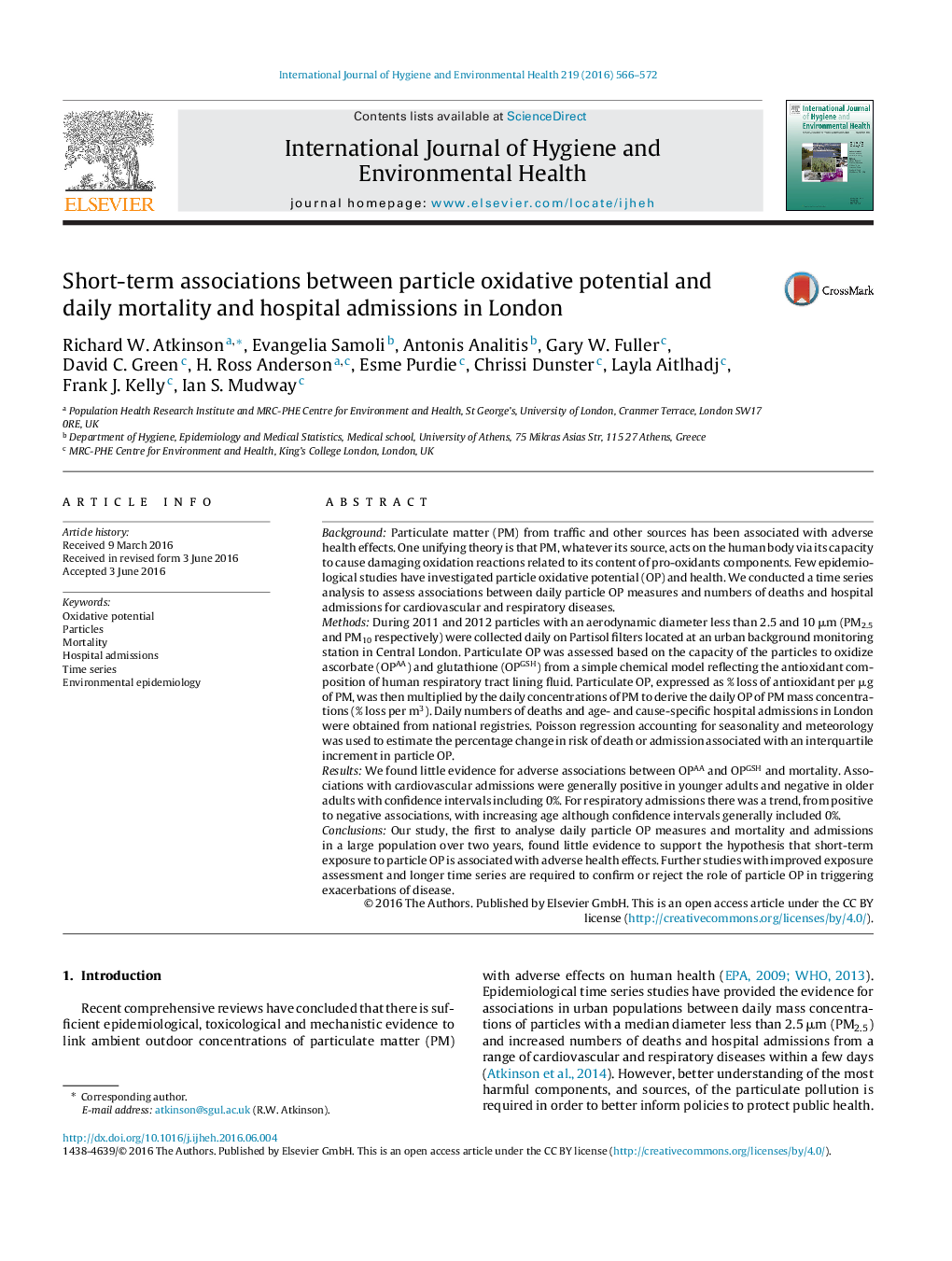| کد مقاله | کد نشریه | سال انتشار | مقاله انگلیسی | نسخه تمام متن |
|---|---|---|---|---|
| 5560615 | 1561881 | 2016 | 7 صفحه PDF | دانلود رایگان |
BackgroundParticulate matter (PM) from traffic and other sources has been associated with adverse health effects. One unifying theory is that PM, whatever its source, acts on the human body via its capacity to cause damaging oxidation reactions related to its content of pro-oxidants components. Few epidemiological studies have investigated particle oxidative potential (OP) and health. We conducted a time series analysis to assess associations between daily particle OP measures and numbers of deaths and hospital admissions for cardiovascular and respiratory diseases.MethodsDuring 2011 and 2012 particles with an aerodynamic diameter less than 2.5 and 10 μm (PM2.5 and PM10 respectively) were collected daily on Partisol filters located at an urban background monitoring station in Central London. Particulate OP was assessed based on the capacity of the particles to oxidize ascorbate (OPAA) and glutathione (OPGSH) from a simple chemical model reflecting the antioxidant composition of human respiratory tract lining fluid. Particulate OP, expressed as % loss of antioxidant per μg of PM, was then multiplied by the daily concentrations of PM to derive the daily OP of PM mass concentrations (% loss per m3). Daily numbers of deaths and age- and cause-specific hospital admissions in London were obtained from national registries. Poisson regression accounting for seasonality and meteorology was used to estimate the percentage change in risk of death or admission associated with an interquartile increment in particle OP.ResultsWe found little evidence for adverse associations between OPAA and OPGSH and mortality. Associations with cardiovascular admissions were generally positive in younger adults and negative in older adults with confidence intervals including 0%. For respiratory admissions there was a trend, from positive to negative associations, with increasing age although confidence intervals generally included 0%.ConclusionsOur study, the first to analyse daily particle OP measures and mortality and admissions in a large population over two years, found little evidence to support the hypothesis that short-term exposure to particle OP is associated with adverse health effects. Further studies with improved exposure assessment and longer time series are required to confirm or reject the role of particle OP in triggering exacerbations of disease.
Journal: International Journal of Hygiene and Environmental Health - Volume 219, Issue 6, August 2016, Pages 566-572
